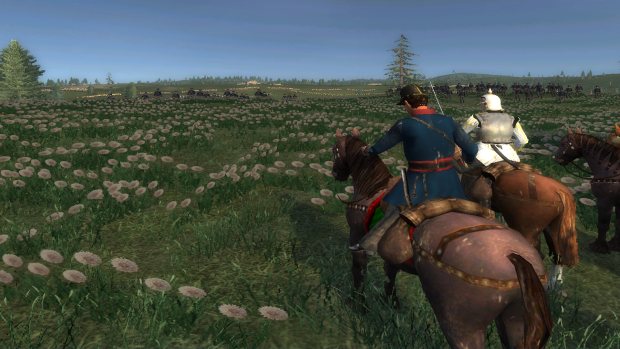Set in the Late Victorian Era, Steam & Steel: Total War features 30 factions and 5 sub-factions from the British Empire to the Sultanate of Aceh. The global campaign contains hundreds of meticulously researched regions, as well as unique political, economic, social and AI mechanics. The weapons and tactics of the era are well represented with 500 unique units each equipped with distinct weapons from jingals to howitzers. The culmination of years of development, research and testing, S&S will remain an active project; continuing in its aim of popularizing the history of the late 19th century.
Battle of Königgrätz, also called Battle Of Sadowa, (July 3, 1866), decisive battle during the Seven Weeks’ War between Prussia and Austria, fought at the village of Sadowa, northwest of the Bohemian town of Königgrätz (now Hradec Králové, Czech Republic) on the upper Elbe River. The Prussian victory effected Austria’s exclusion from a Prussian-dominated Germany.
Austrian forces on the Bohemian front numbered about 240,000 men, who were equipped with muzzle-loading rifles and relied heavily on the bayonet charge. Their recently appointed commander, General Ludwig August, Ritter von Benedek, had accepted the post with reluctance because of his unfamiliarity with both troops and local terrain. The Prussian forces, totaling some 285,000 men, were deployed mainly in three armies ranging in a 270-mile-long arc, from the border of Saxony to Silesia, under the general command of the chief of the general staff, Helmuth von Moltke, who was to test his new theories and methods in the encounter. The Prussian troops were armed with breech-loading needle guns and for the first time in European warfare fully enjoyed the advantages of railroad transport.
After a series of local successes in the field, Moltke was able to unite the three armies on July 1. Because Prussian reconnaissance was faulty and Benedek was searching for better ground, both forces joined battle on July 3 from unfavourable positions. The Austrians lost about 45,000 men, nearly half that number having been taken prisoner, while the Prussians lost fewer than 10,000. Benedek’s retreat to the southeast and the Prussians’ failure to pursue allowed the Austrians to regroup at Olmütz (Olomouc) in Moravia. Both armies were again prepared for battle near Vienna when a truce was arranged at Nikolsburg (Mikulov) on July 26.
Encyclopedia Britannica, Britannica.com, Retrieved 7/7/2023







Will future updates have faction specific officer and general models? This guy looks more french than prussian in his uniform style
It's a possibility, the main issue is the unit cap, because of it, some units share the same models in their regiments and officers.
This has been introduced with the current update, thanks for your suggestion
This comment is currently awaiting admin approval, join now to view.